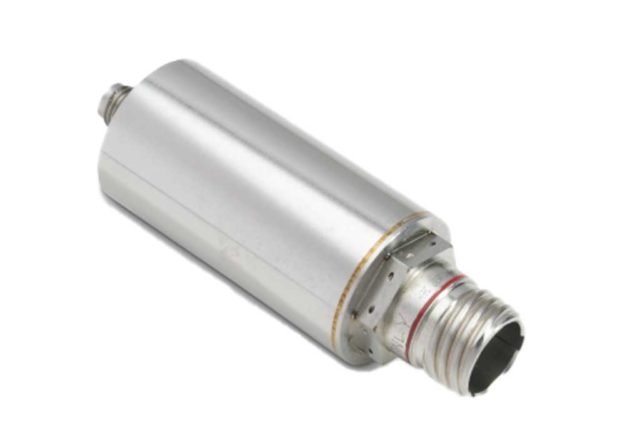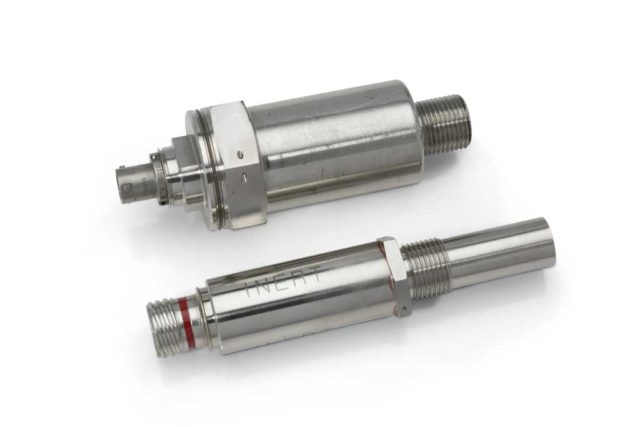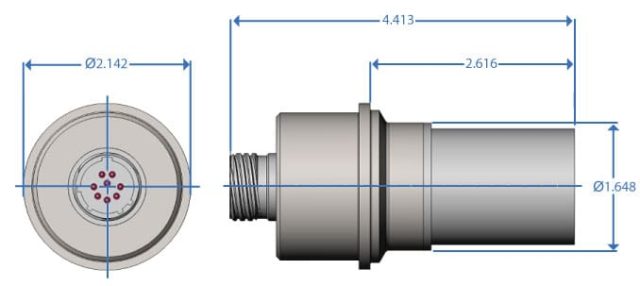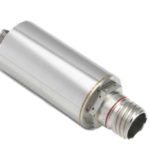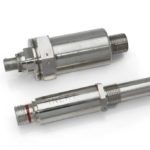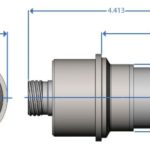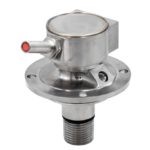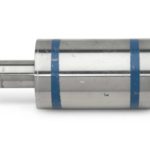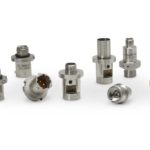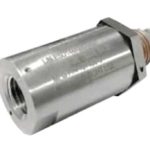Rocket Motor Igniter
Product Description
Rocket Motor Igniters are used to ignite solid rocket motors or liquid fueled rocket engines.
A rocket motor igniter provides the necessary heat source to ignite rocket engines. This solid rocket motor igniter utilizes an electrical input stimulus that ignites an Electro-Explosive Device (EED), which in turn ignites a propellant grain. The propellant grain is designed to sustain a controlled burn to emit the necessary heat and hot particles for sufficient time to reliably ignite a rocket motor. We can tailor the burn duration to meet performance specification requirements, or they can be customized to burn for a specified period of time, based on the application. We have manufactured millions of high power rocket motor igniters which have proven highly effective in a diverse set of applications.
Key Features
How a Rocket Motor Igniter Design Process Works
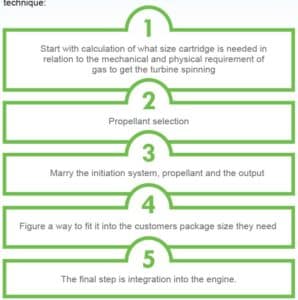
At PacSci EMC we design and build for every environment. Generally we focus on an atmospheric application for start cartridges and pyrotechnic igniters. We jokingly call it ‘turn and burn’ from the standpoint that the start cartridge gets the turbine up and spinning and the pyrotechnic igniter provides heat to light off the charged combustion chamber. The way we approach the design of start cartridges or pyrotechnic igniters is nearly identical and very methodical, a kind of waterfall technique shown at left
Pyrotechnic rocket motor igniters follow a very similar energetic train in terms of how we go about designing them and how they perform. In this picture (Figure 9) of the pyro igniter, starting from the left, you have the firing impetus. It travels down the line into a booster charge that essentially amps up that signal.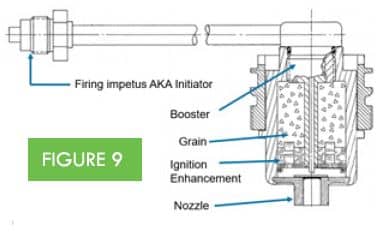
Then it flows down what we call a spit tube that goes through the center of the grain. There’s an environmental closure at the nozzle, which holds in the pressure from the booster. The flames from the booster are reflected back up toward the grain which hits the ignition enhancement which is more sensitive to lighting off. Once that gets burning, the flame transfers into the primary grain. Once the grain is lit off, the pressure builds along with a lot of heat, until it compromises the environmental closure, and the exhaust products flow out the nozzle. It’s very similar to the way the start cartridge works just on a much smaller scale.
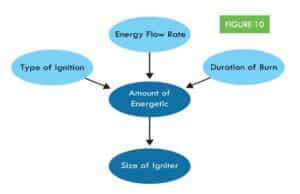
Initiation – Two Methods
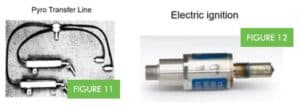
The electric ignition (Figure 12) is the same as a start cart. In many cases, we use the same core components in the initiation of the pyrotechnic igniter that we do in the start cartridge. If you see a cutaway of this, it will look identical in terms of the energetic components. The case is a screw on where the customer’s connector screws directly to the back of the initiator. The other end is the hot side where the solid comes out.
Propellant Selections
In the start cartridge, the propellant is really optimized around putting out cool gas to get it up and spinning. With the pyrotechnic igniter it’s really about putting out hot particulate matter, or “flame”, making it a bit more exciting in terms of visibility.
In Figure 13 we have an ammonium perchlorate-based solution. This is a sample of a ROFI (radially outward firing igniter) and in this case, it’s heavily doped with aluminum, which puts out the sparklers. There’s a video on YouTube showing this ROFI in action. It’s normally inside a liquid rocket engine, but it’s one of the propellants we use in jet engine starting. This ammonium perchlorate solution is more modern and is traditionally used as a solid rocket fuel.
The MTV (Magnesium Teflon Viton) is the more traditional solution (Figure 14). It’s significantly more energetic in terms of energy per mass, and its output has a lot more solids.
MTV is traditionally used in an IR decoy flare. Very bright, very hot, and it puts out a lot less pressure, which, in this case for a turbine engine start, doesn’t matter as much. It tends to run a little bit denser, and therefore fits in a smaller packaging.
Engine Integration
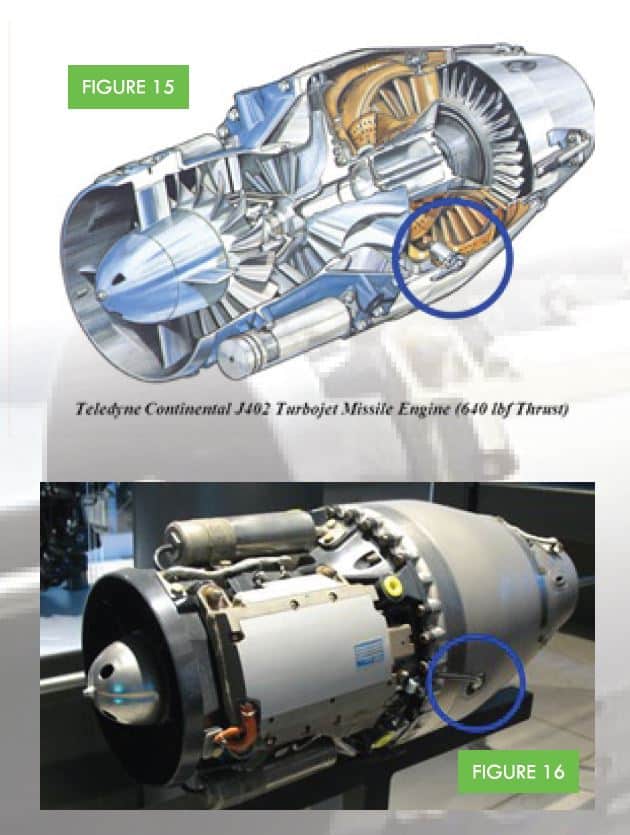
Now it’s on to integration into the engine. In this picture of the harpoon engine (Figure 15), you can see the igniter tucked way in. The start cartridge is up on top but tucked back in the hot section where the combustion chamber is, where the igniter sits.
In the cutaway image (Figure 15) that small igniter pierces through the outer body and into the combustion chamber.
This is also a split system, so the unit is rather small. There’s a mirrored unit on the other side, that’s divided the total required energy into two units.
The final integration of the engine is really the bigger portion of the engineering effort from the standpoint of getting it mechanically packaged and in a way that can fit within a fairing and within the overall envelope of the engine. No matter which engine start device you require, at PacSci EMC, we always prioritize working together with you to meet your application requirements.
Applications
Our igniters are used on multiple missile and space vehicle platforms, including:
- Delta IV, Main Engine (RS-68) Igniter
- Delta IV, Gas Generator Igniter (RS-68)
- Antares (Taurus II), Main Engine (AJ26-62)
Specifications
- All-Fire
4.0 amperes for 20 milliseconds - Operating Temperature
-20°F to +160°C - Applicable Specifications
Qualified to MIL-STD-1576
Initiator qualified to MIL-I-23659 - Output
Initiation Delay: 70 milliseconds, maximum
Action Time: 2.0 seconds, minimum
Plume Length: 12 inches, minimum
Caloric Output Rate: 36,400 calories per second, minimum
Interface
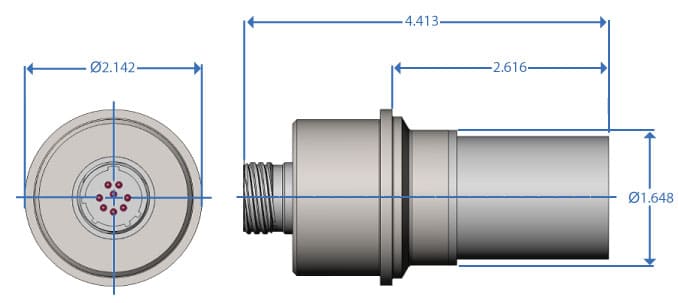
FAQ's
-
What is a Motor Rocket Igniter?
RMIs are used to ignite solid rocket motors or liquid fueled rocket engines.
-
What is the output device?
Low energy exploding foil initiator, deflagrating or detonating, with or without a TBI.
